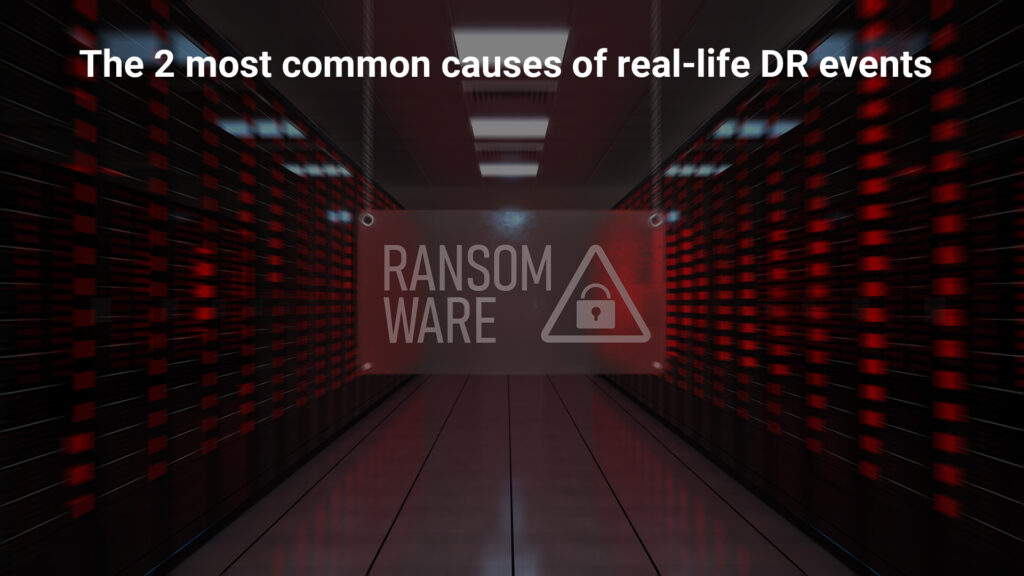Data is the foundation of almost every organization. Still, protecting data can be a huge challenge for organizations. This is due to among others persistent threats from cybercriminals, employee errors and natural disasters. We’ve all heard horror stories about unexpected business disruptions that adversely impact business operations, revenue, and customer sentiment. Unfortunately, these disruptive events do happen and knowing the most common causes can help businesses better protect their data and better prepare to withstand disruptive events. In this article, we look at the two most common causes of real-life DR events namely ransomware and power outages.
1. Ransomware
According to Veeam’s 2022 Data Protection Trends report, 76% of organizations had at least one ransomware attack last year. In addition, 54% of companies experienced prolonged downtime as a result of an attack. Ransomware is particularly sneaky and can easily disguise itself and slip undetected into virtual and computing environments. Human awareness should form the cornerstone of security, business continuity and disaster recovery efforts. Data protection solutions and enforcement should therefore form the basis of organizations’ disaster recovery policies. It’s not just about defending against and withstanding a DR event but also about speed of recovery.
2. Power outages
Nearly 80% of power outages are the result of extreme weather such as severe cold, heatwaves and harsh storms. Accidents and equipment breakdowns are the cause of the rest. North American businesses suffer millions in revenue loss yearly due to damage to substations or transmission lines during weather-related disruptions. Power outages can easily disrupt operations, especially where organizations’ infrastructure is not redundant enough to withstand the impact of electricity-related disruptions. Protecting data from power outages can be achieved by backing up data and storing it at a different location (virtual and/or physical) that is easily accessible and readily available. Data backups are crucial for any business and companies adopt different approaches depending on how quickly and accurately they need to recover data. Establishing recovery time objectives (RTOs) and recovery point objectives (RPOs) can illuminate backup needs. The lower the RPO is the better.
A healthy DR solution needs to consider rapid data recovery when ransomware exploits security gaps and system vulnerabilities or when power outages disrupt mission-critical systems. Disaster Recovery-as-a-Service delivers an almost instant homerun by substantially reducing RTOs and RPOs allowing business operations to function remotely until traditional systems can be restored.
Stage2Data’s team of DR experts are keen to help organisations identify a foolproof solution that takes your business’ specific objectives and requirements into account.
Can You Tell if Your Data
Recovery is Predictable?
If you found this post interesting, you might enjoy these too:
What is BCDR and why should North American business leaders take note?
4 Disaster-Recovery-as-a-Service must-haves. Does your service provider include these?
Case Study: Onboarding Cohesity Improves Stage2Data’s Top and Bottom Lines



